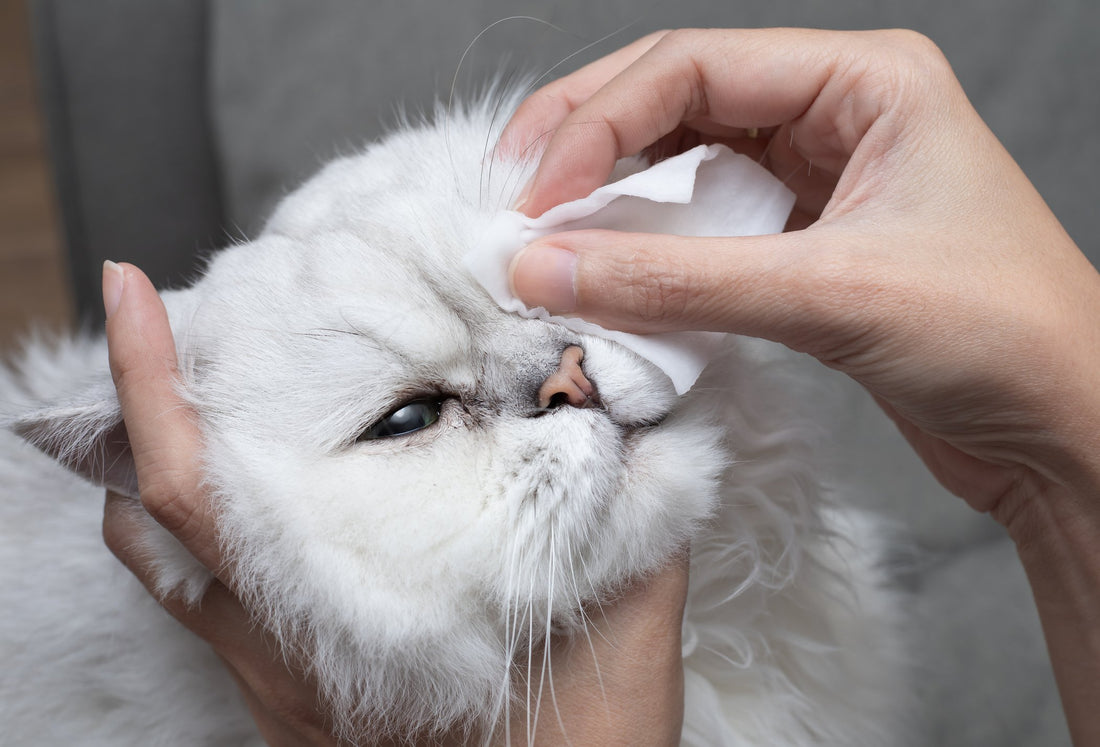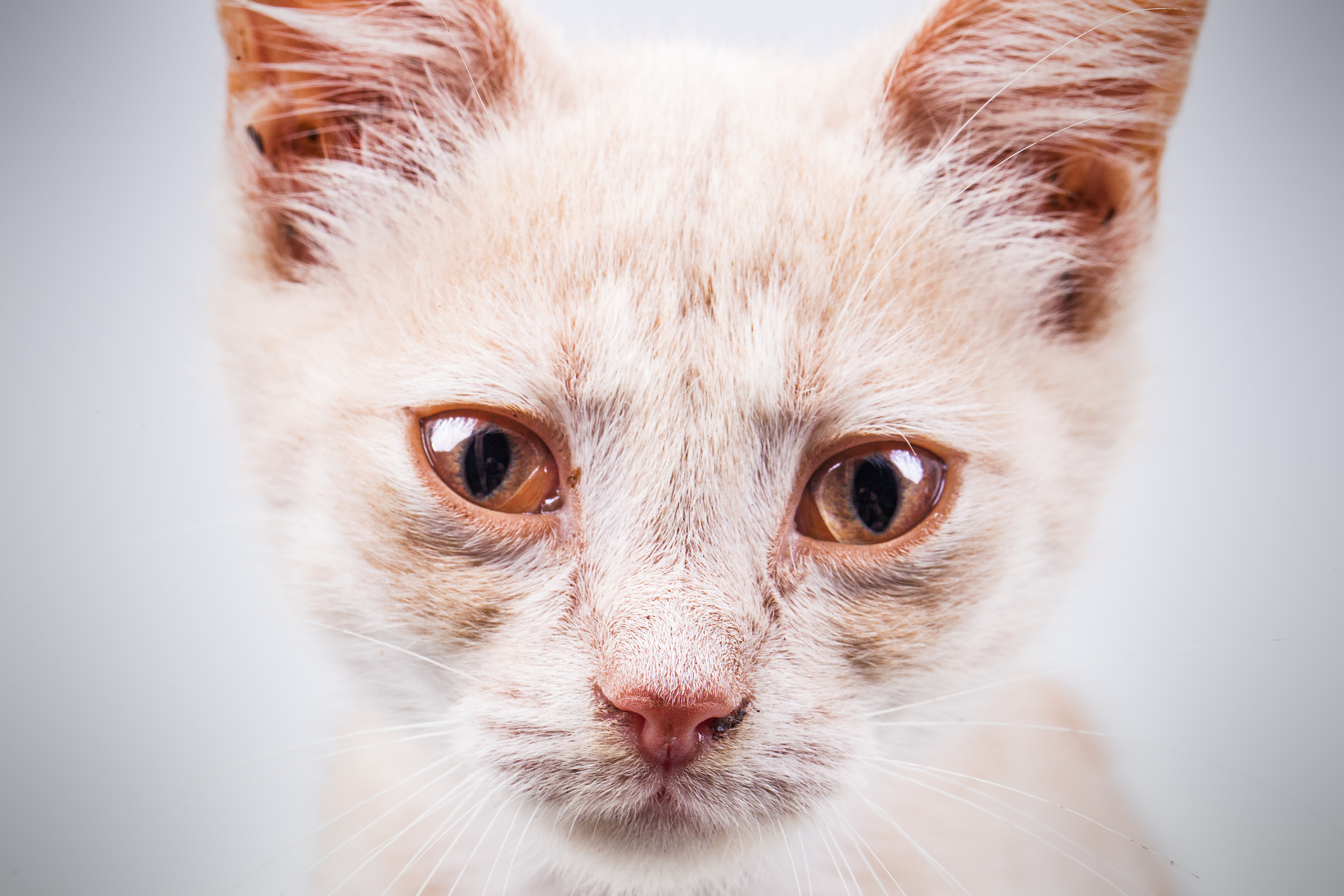
7 Reasons Why Your Cats Eyes Are Leaking
Everyone wakes up with a little eye crust now and then, and so do our cats! This bodily mechanism is used to clear away dust and debris to protect the eyes. But when your cat seems plagued by persistent eye gunk, watery eyes or a strange-colored eye discharge, something might be going on with their health.
It’s important to monitor any “leaking” or discharge coming from your cat’s eyes and raise any concerns to your vet. Your cat may have an underlying health problem that’s quickly remedied.

Here are seven potential causes of eye discharge in cats and how to spot them:
- Everyday eye crust: Just like how humans can accumulate a small amount of eye crust in the morning, cats can, too. If you notice a small amount of slightly brown and crusty discharge in your kitty’s eyes in the morning, and it’s consistent, it’s probably nothing to worry about. Most likely, it’s just a product of the eyes clearing away debris while your kitty snoozed.
- Allergies: If your cat experiences seasonal allergies or allergies caused by everyday airborne allergens like smoke or dust, they might suffer from symptoms that affect the eyes and nose—or hay fever. Cats with allergic rhinitis most often develop watery eyes that look red and puffy. Allergies generally don’t cause colored discharge. Symptoms accompanying the watery eyes might include sneezing, a runny nose and itching.
- Conjunctivitis: The notorious “pink eye” infection that often affects human children can also affect cats! Conjunctivitis, or inflammation of the lining of the eye, is often a result of a bacterial or viral infection of the eye. This causes one or both eyes to become swollen and pink or red. Cats with conjunctivitis often have a mucus-like discharge that might be white, yellow or green. Your cat may also squint a lot and paw at their eye due to discomfort.
- Upper respiratory infections: Viruses that affect your cat’s upper respiratory system, such as feline calicivirus, can cause symptoms like sneezing and/or labored breathing. These types of infections often affect the eyes, as well, leading to sticky, mucoid discharge of a yellow or green color. Discharge related to upper respiratory infections will usually occur in both eyes.
- Injury: Cat eye injuries are relatively common—especially in multi-cat households. If your cat has endured a scratch or a puncture wound to the eye, they may experience some form of discharge that might range from clear and watery to thick and colorful. The major difference is that the discharge will only occur in the affected eye. Other symptoms may include excessive squinting, light sensitivity, eye swelling and even bleeding from the eye.
- Corneal disorders: The cornea, or the rounded surface that covers and protects the main part of the eye, is susceptible to a range of problems, including ulcers and injuries. In these instances, the affected part of the cornea typically appears cloudy and is accompanied by excessive blinking and inflammation. The body will also produce more tears in response to these kinds of problems, which produces a thin, watery discharge.
- Foreign objects: Something as small as a speck of dirt or as large as a piece of grass could get stuck in your cat’s eye. If this happens, their tear ducts will produce lots of tears in an attempt to wash the foreign object or debris away. If your cat is consistently producing watery discharge, the tears might not be enough to rid the eyes of the object, and they may require veterinarian assistance.
Keep your cat’s eyes clear

Tear production and some occasional discharge can occasionally be normal, but they can also be indicative of a health problem. If your cat has leaking or gunky eyes, monitor them closely for other symptoms and note any changes. You can wipe away your cat’s eye boogers using a damp washcloth or towel—but be sure to wash these in between uses and wash your hands! Consistently wiping away eye gunk can make it easier for your cat to see and stay comfortable.
If their eye discharge doesn’t clear up within a day or two, you should probably contact your vet for an examination and treatment. Depending on the underlying problem, your vet may recommend an antibacterial or anti-fungal treatment, eye drops or saline washes or more invasive treatments like surgery to correct injuries or corneal issues.
It isn’t always possible to prevent eye conditions from causing your cat grief, but you can do simple things like bolstering your cat’s immune system and preventing cat fights to help minimize their risk of infections and injuries, keeping their eyes healthy and clear!


